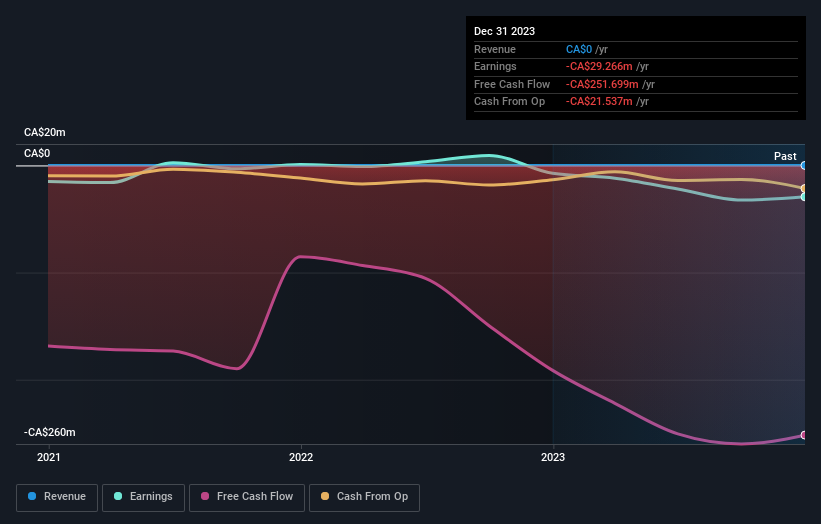Key Insights
-
Seabridge Gold’s significant retail investors ownership suggests that the key decisions are influenced by shareholders from the larger public
-
44% of the business is held by the top 25 shareholders
-
Insiders have sold recently
If you want to know who really controls Seabridge Gold Inc. (TSE:SEA), then you’ll have to look at the makeup of its share registry. We can see that retail investors own the lion’s share in the company with 47% ownership. That is, the group stands to benefit the most if the stock rises (or lose the most if there is a downturn).
And institutions on the other hand have a 45% ownership in the company. Large companies usually have institutions as shareholders, and we usually see insiders owning shares in smaller companies.
Let’s delve deeper into each type of owner of Seabridge Gold, beginning with the chart below.
View our latest analysis for Seabridge Gold
What Does The Institutional Ownership Tell Us About Seabridge Gold?
Institutions typically measure themselves against a benchmark when reporting to their own investors, so they often become more enthusiastic about a stock once it’s included in a major index. We would expect most companies to have some institutions on the register, especially if they are growing.
Seabridge Gold already has institutions on the share registry. Indeed, they own a respectable stake in the company. This implies the analysts working for those institutions have looked at the stock and they like it. But just like anyone else, they could be wrong. If multiple institutions change their view on a stock at the same time, you could see the share price drop fast. It’s therefore worth looking at Seabridge Gold’s earnings history below. Of course, the future is what really matters.

We note that hedge funds don’t have a meaningful investment in Seabridge Gold. Looking at our data, we can see that the largest shareholder is Pan Atlantic Bank and Trust Limited, Asset Management Arm with 7.2% of shares outstanding. FCMI Parent Co. is the second largest shareholder owning 5.6% of common stock, and National Bank Investments Inc. holds about 5.2% of the company stock. In addition, we found that Rudi Fronk, the CEO has 1.4% of the shares allocated to their name.
Our studies suggest that the top 25 shareholders collectively control less than half of the company’s shares, meaning that the company’s shares are widely disseminated and there is no dominant shareholder.
While studying institutional ownership for a company can add value to your research, it is also a good practice to research analyst recommendations to get a deeper understand of a stock’s expected performance. Our information suggests that there isn’t any analyst coverage of the stock, so it is probably little known.
Insider Ownership Of Seabridge Gold
The definition of company insiders can be subjective and does vary between jurisdictions. Our data reflects individual insiders, capturing board members at the very least. Company management run the business, but the CEO will answer to the board, even if he or she is a member of it.
Most consider insider ownership a positive because it can indicate the board is well aligned with other shareholders. However, on some occasions too much power is concentrated within this group.
We can see that insiders own shares in Seabridge Gold Inc.. The insiders have a meaningful stake worth CA$52m. Most would see this as a real positive. It is good to see this level of investment by insiders. You can check here to see if those insiders have been buying recently.
General Public Ownership
The general public– including retail investors — own 47% stake in the company, and hence can’t easily be ignored. This size of ownership, while considerable, may not be enough to change company policy if the decision is not in sync with other large shareholders.
Private Company Ownership
It seems that Private Companies own 5.6%, of the Seabridge Gold stock. It’s hard to draw any conclusions from this fact alone, so its worth looking into who owns those private companies. Sometimes insiders or other related parties have an interest in shares in a public company through a separate private company.
Next Steps:
It’s always worth thinking about the different groups who own shares in a company. But to understand Seabridge Gold better, we need to consider many other factors. To that end, you should learn about the 5 warning signs we’ve spotted with Seabridge Gold (including 3 which shouldn’t be ignored) .
If you would prefer check out another company — one with potentially superior financials — then do not miss this free list of interesting companies, backed by strong financial data.
NB: Figures in this article are calculated using data from the last twelve months, which refer to the 12-month period ending on the last date of the month the financial statement is dated. This may not be consistent with full year annual report figures.
Have feedback on this article? Concerned about the content? Get in touch with us directly. Alternatively, email editorial-team (at) simplywallst.com.
This article by Simply Wall St is general in nature. We provide commentary based on historical data and analyst forecasts only using an unbiased methodology and our articles are not intended to be financial advice. It does not constitute a recommendation to buy or sell any stock, and does not take account of your objectives, or your financial situation. We aim to bring you long-term focused analysis driven by fundamental data. Note that our analysis may not factor in the latest price-sensitive company announcements or qualitative material. Simply Wall St has no position in any stocks mentioned.
Credit: Source link
